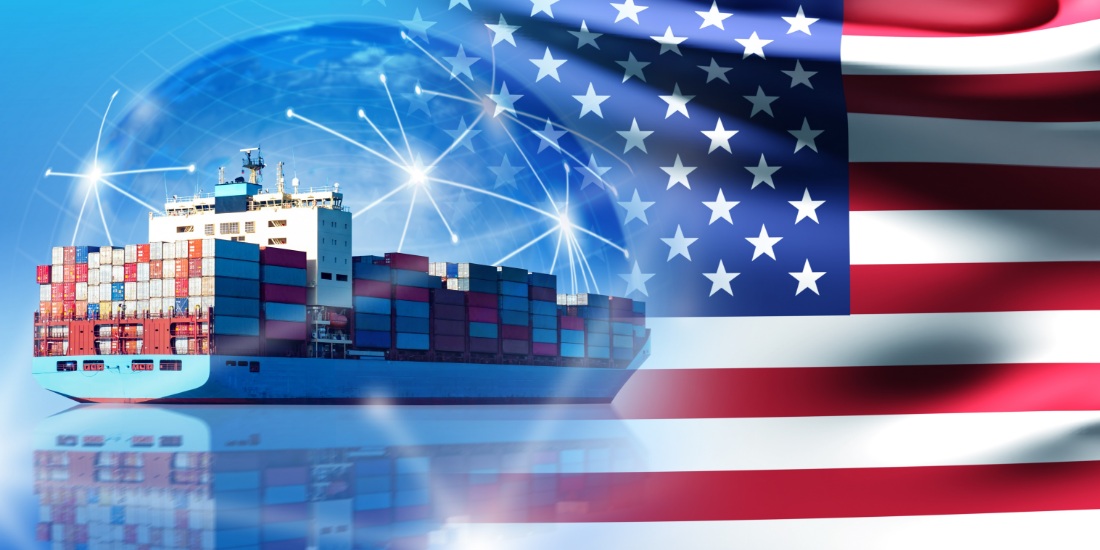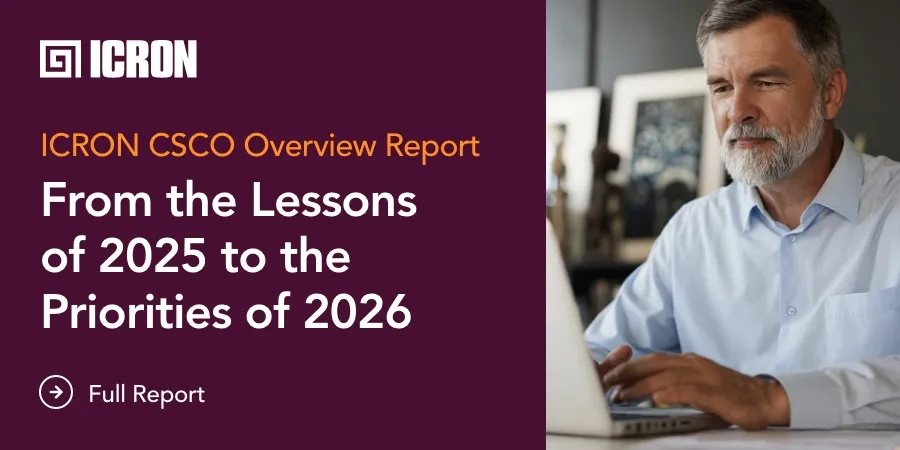
The Trump administration began with a bang, announcing the new tariff policy, which sent ripples across the business world. Wall Street reacted positively to the tariff policy announcement, with the S&P 500 rising 1% to end at 6,115.07. The Dow Jones Industrial Average rose 342.87 points, or 0.8%, while the Nasdaq Composite jumped 1.5%. However, most market experts attributed the positive reaction to the fact that the tariffs will not be imposed immediately. *1
While European markets gear up to deal with the rising costs, discussions on reciprocal tariffs have emerging markets like India, Brazil, Vietnam, and other Southeast Asian and African countries bracing for a financial hit. Even as the United States government works to iron out the details and implement the new policy in its entirety, leading businesses worldwide are already rethinking their supply chain plans to mitigate the risks and avoid increasing costs wherever possible.
Rewiring Global Supply Chains for Resilience
Reciprocal tariffs on goods such as automobiles, electronics, and agricultural products are expected to increase consumer prices and disrupt existing trade agreements. These tariffs may cause demand fluctuations and price volatility, as importers and exporters face higher costs, potentially reducing trade volumes.
In response, countries might encourage local production to decrease reliance on U.S. imports, explore alternative supply chain routes, or seek new sourcing countries. For instance, Nissan has considered relocating some production from Mexico due to potential U.S. tariffs. *2 Indian exporters face uncertainty over reciprocal tariffs, which could impact sectors like chemicals, metal products, and automobiles. *3
Regardless of industry or geographic location, everyone is bound to feel the impact of the new tariff policy. Looking ahead, supply chain experts are busy strategizing new approaches to building resilience for businesses that rely on cross-border supply chains. Some of the key factors that will make the difference between disruption and success are –
Broadening Your Risk Strategy
Expanding the criterion beyond performance, resilience, and sustainability can help global businesses better assess risk and uncertainty. This will enable them to build a more resilient supply chain network architecture and manufacturing footprint.
Diversify Sourcing Options
As the new tariff policy slowly takes effect globally, it is advisable to diversify sourcing and invest in reliable procurement planning solutions. Companies should consider flexibility and a country’s ability to deliver change in line with global strategic priorities.
Research Readiness Factors
In light of rising costs and uncertainty, investors are expected to look for nations that have proactively invested in readiness factors. Preferred manufacturing locations will be those where businesses and governments have worked together to build infrastructure, invest in technology and green energy, and provide affordable skilled labor.
Strengthening Intra-EU Trade
Strengthening trade relations within the EU can mitigate rising costs and trade losses. As tariffs rise and exporting to the US becomes difficult, businesses in the European Union will do well to explore new markets closer to home and seek new partnerships to offset the loss of business in the US markets.
Embrace Technology
Adopting the right technology may be a key readiness factor for businesses anticipating a hit due to the new tariff policy. Advanced analytics and supply chain planning solutions offer real-time visibility into inventory levels, finances, operations, and transportation costs. Such solutions can also significantly enhance agility against potential disruptions.
What is America’s New Tariff Policy?
The Trade Expansion Act of 1962 authorized tariffs that the United States of America imposed on imports from foreign countries. The focus was on national security, primarily steel and aluminum products. It also protected domestic industries from foreign competition, particularly China. In 2025, the Trump administration proclaimed the reinstatement of a 25% tariff on steel imports and increased the tariff on aluminum imports from 10% to 25% from 12 March 2025.
President Trump also signed executive orders imposing a 25% tariff on all imports from Canada and Mexico, with a reduced 10% tariff on Canadian energy products, including oil, natural gas, and electricity. These tariffs were scheduled to take effect on February 4, 2025, but were postponed at the last moment. The same executive orders introduced an additional 10% tariff on all Chinese goods, supplementing existing tariffs of up to 25% on many Chinese products – which have taken effect as scheduled.
The Trump administration is also setting the stage to add new import taxes on foreign goods to counter higher tariffs imposed by US trade partners, non-tariff barriers such as value-added-tax, and other regulatory regimes deemed unfair by America. These reciprocal tariffs will be decided based on an investigation to determine which countries have the highest trade surpluses with the U.S. or the most egregious issues.
The Global Impact of USA’s New Tariff Policy
The USA’s tariff policy changes will significantly affect trade dynamics, supply chains, and international economic relationships. Here’s a quick summary of the anticipated global implications:
Reciprocal Tariffs Implementation
Reciprocal tariffs on a wide range of goods, including automobiles, electronics, and agricultural products, could increase consumer prices, disrupt existing trade agreements, and increase tensions with key trading partners.
Economic Impact on the EU
Trade partners in the European Union anticipate significant losses owing to the 20% basic tariffs on all US imports and 60% on imports from China. A recent study by a German economic research agency, ifo, predicted economic damage of €33 billion to Germany alone. *4 Countries in the EU, for whom the US is the largest market, expect a fall of up to 15% in their exports to the US and are gearing up for significant losses.
Supply Chain Disruptions
Experts warn of significant supply chain disruptions like those experienced during the global pandemic. Industries relying on integrated international networks, such as automotive, pharmaceutical, and hi-tech manufacturing, will be adversely affected. Increased costs and delays due to higher tariffs will hit companies across North America and trigger negative consequences for the global supply chain.
Inflationary Pressures
Higher tariffs are expected to lead to higher prices for imported goods in the US, contributing to inflation and a higher cost of living for US citizens. Economic analysts predict an addition of 0.5% to consumer costs in the US and a slowdown of GDP growth by 0.2% in 2025 and 0.5% in 2026. *5
Shift in Global Trade Policies
The USA’s new tariff policy is viewed as a step back from multilateral trade agreements. Global experts consider this a protectionist move that undermines long-established global trading norms and institutions like the World Trade Organization. It may set the trend to erect trade barriers to solve a financial crisis—a decidedly undesirable outcome for global businesses. Even though the Trump administration may not implement the new tariff policy immediately, the entire situation is a wake-up call to remind us that changes in fiscal policies anywhere in the world can impact global business. The ripple effects of the new tariff policy will continue to challenge global companies, forcing them to rethink supply chain strategies in an increasingly uncertain landscape. As trade barriers rise and economic pressures mount, organizations that proactively adapt will be better positioned to navigate these disruptions.
Even though the Trump administration may not implement the new tariff policy immediately, the entire situation is a wake-up call to remind us that changes in fiscal policies anywhere in the world can impact global business. The ripple effects of the new tariff policy will continue to challenge global companies, forcing them to rethink supply chain strategies in an increasingly uncertain landscape. As trade barriers rise and economic pressures mount, organizations that proactively adapt will be better positioned to navigate these disruptions.
Supply chain resilience is more critical than ever in this evolving trade landscape. Companies must leverage advanced demand forecasting, scenario analysis, and risk management to reassess production and sourcing strategies based on country-specific risks. ICRON’s intelligent decision-making solutions, powered by real-time data analytics, help businesses optimize costs in response to tariff changes while unlocking new opportunities. By integrating optimization and decision-support systems, companies can build robust, future-ready supply chains that withstand policy shifts, economic fluctuations, and market volatility.
Reach out to learn how ICRON can give you a competitive edge in this new trade environment.














